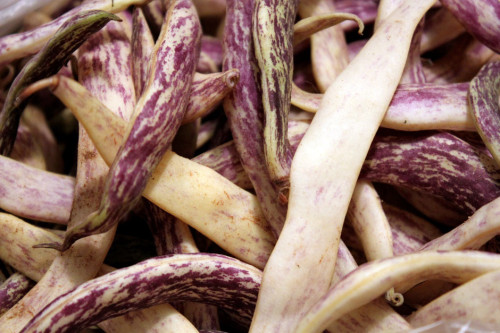
IN SEASON:
July-September
COOKING TIPS:
Snip off tops and tails of beans before cooking. Beans are wonderful steamed but they also can be grilled or roasted.
STORAGE AND HANDLING:
Keep beans refrigerated in a plastic bag. Beans will last about a week in the fridge. Remember to snap off the tops and tails before cooking.
NUTRITIONAL DETAILS:
Fresh beans, whether green, yellow, purple, filet or Italian, do not contain significant amounts of protein like their dry cousins. However, they do have some vitamins A, B1 and B2 plus calcium and potassium. Lima beans are very high in potassium, phosphorus, and magnesium; like all other beans it is also high in protein and carbohydrates.
VARIETIES:
Jade (green), Ambra, Eureka (yellow), Royal Burgundy (Purple), Italian Roma II, Tongue of Fire (Fresh Shell), Isar, Tavera (French Filets)
Dry Beans
IN SEASON:
October-June
COOKING TIPS:
Soak dry beans for at least one hour or overnight in cold water. Drain and rinse before cooking. Simmer beans to keep them from splitting and and salt late in the cooking process to avoid toughness.
STORAGE AND HANDLING:
Dry beans will last for years, but best if used within one year. Keep them dry, cool and in an air-tight container. It is best to soak beans for at least one hour before cooking, soaking overnight is even better. This makes the beans more digestible.
NUTRITIONAL DETAILS:
Beans are in the legume family and are higher in protein than eggs have no cholesterol or saturated fats and contain numerous vitamins and minerals including calcium, iron, zinc, potassium, and the B vitamins. They also contain omega-3 fatty acids, complex carbohydrates which have a low glycemic index. They contain phytochemicals that have anti-cancer activity and that reduce serum cholesterol.
VARIETIES:
Cannellini, Red Kidney, Brown Dutch, Garbanzo, Black Turtle, Adzuki, Pinto
